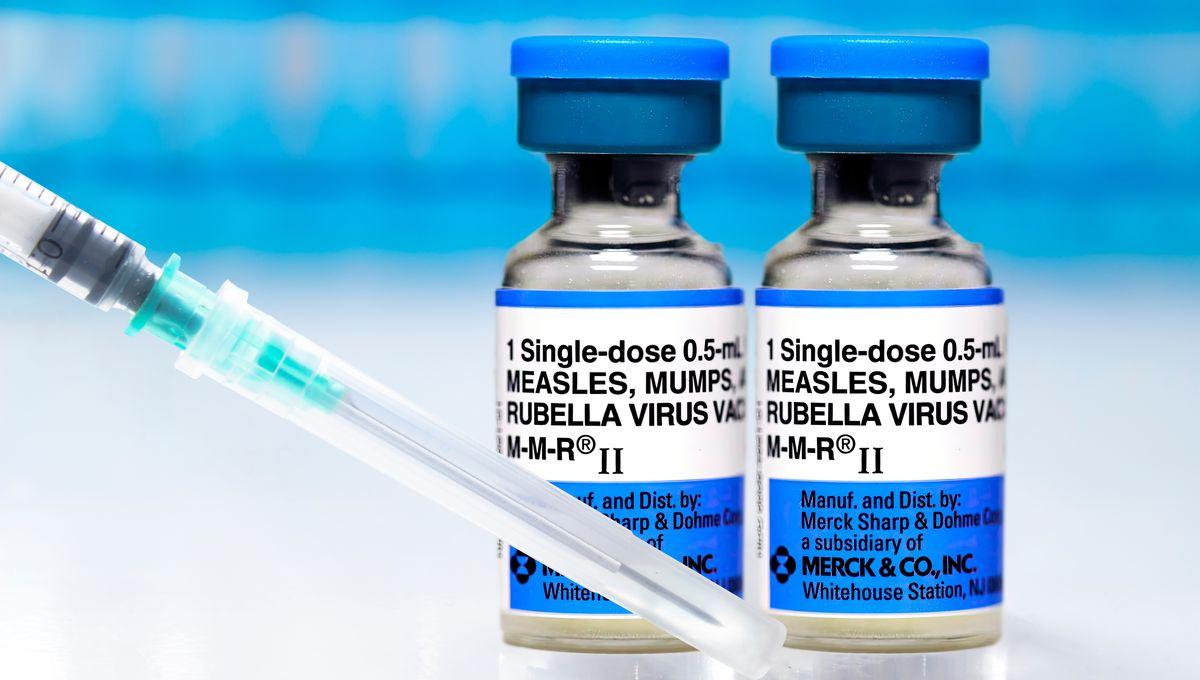The acting director of the US Centers for Disease Control and Prevention (CDC) has endorsed comments made by President Donald Trump, calling on parents to request that the measles, mumps, and rubella (MMR) vaccines be given to their kids as three separate shots, known as monovalent vaccines.
The rest of this article is behind a paywall. Please sign in or subscribe to access the full content. The CDC, guided by the Advisory Committee on Immunization Practices (ACIP), just announced it will adopt new recommendations on MMR vaccination. Previously, young kids had the option of receiving the MMR combined with the chickenpox (varicella) vaccine, known as the MMRV. This is no longer recommended for a child’s first dose, typically given at 12 months. But acting director Jim O’Neill has gone a step further, suggesting in a post on X that the MMR itself be divided into three separate vaccines. It follows comments posted by President Trump to his social media platform Truth Social, in which he called on “pregnant women” to “break up the MMR shot into three totally separate shots (not mixed!).” This is not a new idea. It can be traced back – like all the modern-day controversy surrounding this particular vaccine – to the totally discredited and now retracted paper published by Andrew Wakefield et al in 1998. As well as the false claim that the MMR vaccine may be associated with bowel disease and autism, which has been utterly debunked by decades’ worth of better, more rigorous studies, Wakefield took the opportunity after the publication of the paper to suggest splitting the vaccine to mitigate these imaginary adverse outcomes. But there was something that Wakefield hadn’t been so transparent about. Investigative journalist Brian Deer exposed commercial conflicts of interest that Wakefield had not disclosed, writing in the BMJ that the children in the study “were recruited through anti-MMR campaigners, and the study was commissioned and funded for planned litigation.” The study was set up to find issues with the MMR vaccine because “the undisclosed goal […] was to help sue the vaccine’s manufacturers.” Deer also got hold of a UK patent application in Wakefield’s name, which repeats the untrue claims that the MMR is associated with autism and bowel disease. In it, Wakefield writes, “I have now discovered a combined vaccine/therapeutic agent which is not only most probably safer to administer to children and others […] but which can be used to treat [inflammatory bowel disease”. This has been taken, by Deer and others since, as evidence that Wakefield planned to discredit the combined MMR vaccine in part so that he might profit from an alternative formulation. After the longest hearing of its kind, the UK General Medical Council stripped Wakefield of his right to practice medicine in 2010, finding that as well as dishonesty about financial conflicts, the actual data in the study had been manipulated and, in some cases even falsified. The result of Wakefield’s comments and the media storm that followed was a substantial drop in MMR vaccine uptake and mistrust of this vaccine that has continued in some quarters to this day. In that context, it’s not shocking to hear senior political figures calling for single vaccines in 2025. That isn’t to say it’s been any less dispiriting for many in the medical profession, who have been reacting to O’Neill’s comments. In a video posted to X, Dr Paul Offit, Director of the Vaccine Education Center at Children’s Hospital of Philadelphia, said that 24 studies since the Wakefield paper have compared MMR-vaccinated and unvaccinated children and found no evidence of any link with autism. “Therefore,” he continued, “there was no reason to believe that separating the vaccine into its three component parts will lessen the risk of autism.” Offit added that a return to monovalent vaccines would mean kids would have to get six shots instead of two, and the whole process would cost more. Given the strength of feeling some have about the MMR, people may ask: would it not be better just to split up the shots, even if there’s no real justification for doing so? Monovalent vaccines used to be readily available – indeed, people born before the MMR was approved probably got at least an individual measles shot as kids. But the MMR is so safe and effective, the monovalent vaccines were eventually phased out. “These monovalent vaccines are not even available and I do not envision that vaccine manufacturers are going to want to produce these monovalent vaccines – particularly if they need to be studied in placebo-controlled trials as the Department of [Health and Human Services] has called for,” said epidemiologist William Moss to The Hill. The MMR has the added benefit of offering kids protection against three diseases at once. If you split them up, you risk catching one of the diseases before you’ve had a chance to get that shot. It’s also just more appointments for parents to keep on top of, so there’s a greater risk that a child won’t get the full vaccine course. There are already problems with vaccine coverage for measles – this would likely lead to even more infections. And even more persuasively, Dr Rana Alissa of the American Academy of Pediatrics told USA Today that the MMR may actually be more effective than the single shots: “Studies have shown that when you give them together, the immune response is much better. This is how you get lifelong immunity.” Ultimately, here’s what we know: The content of this article is not intended to be a substitute for professional medical advice, diagnosis, or treatment. Always seek the advice of qualified health providers with questions you may have regarding medical conditions. It all goes back to Wakefield
How scientists are reacting






